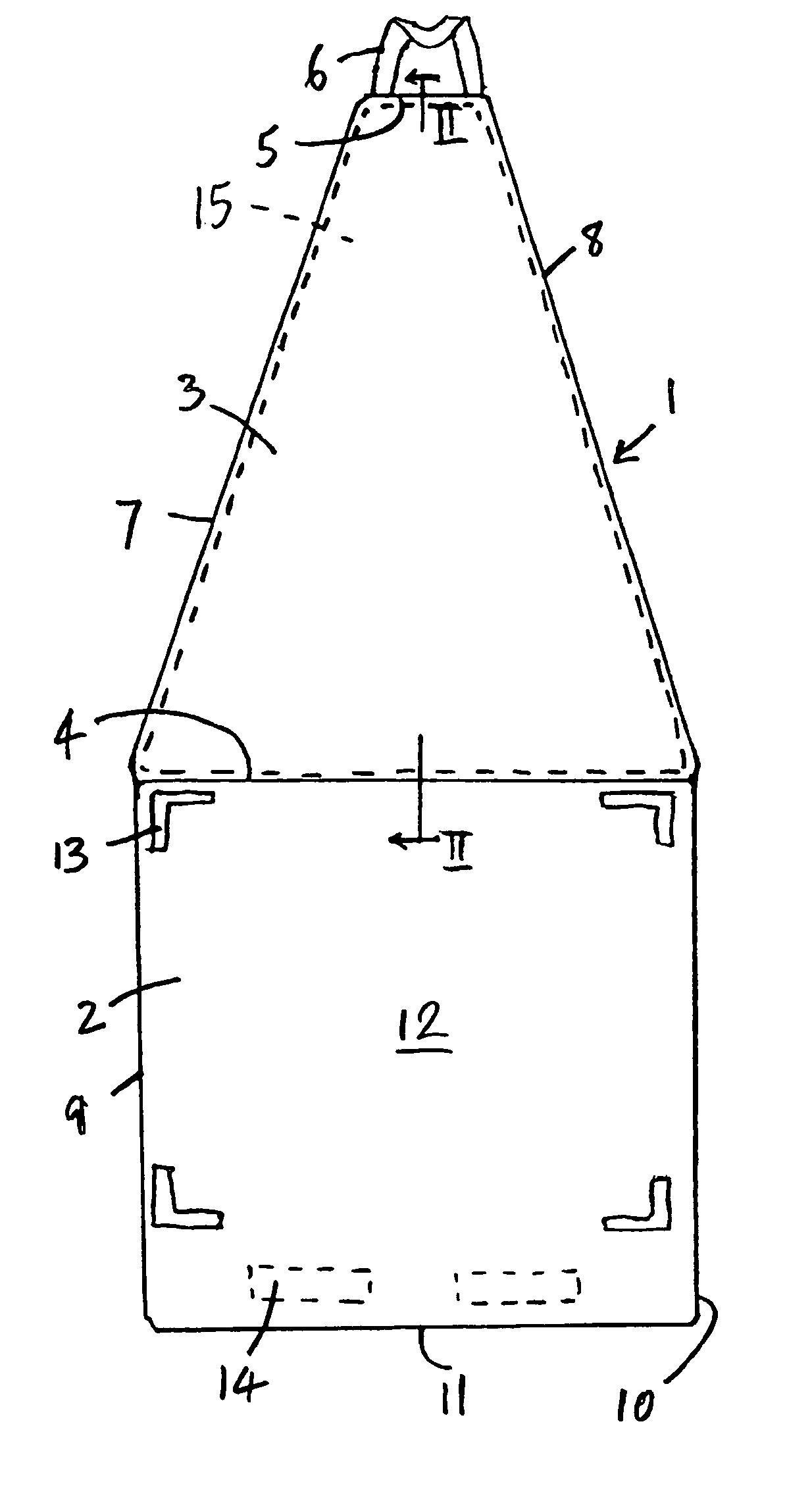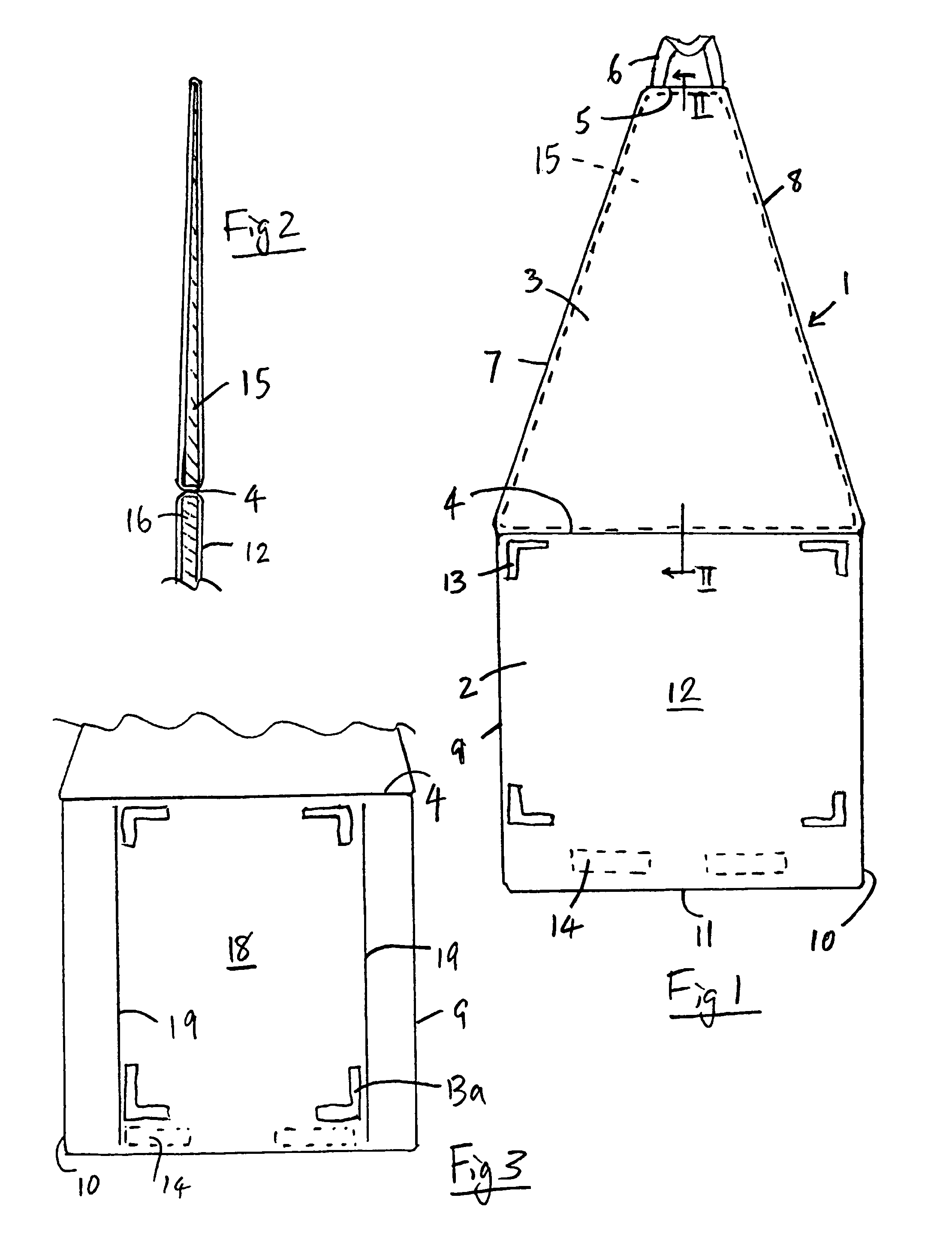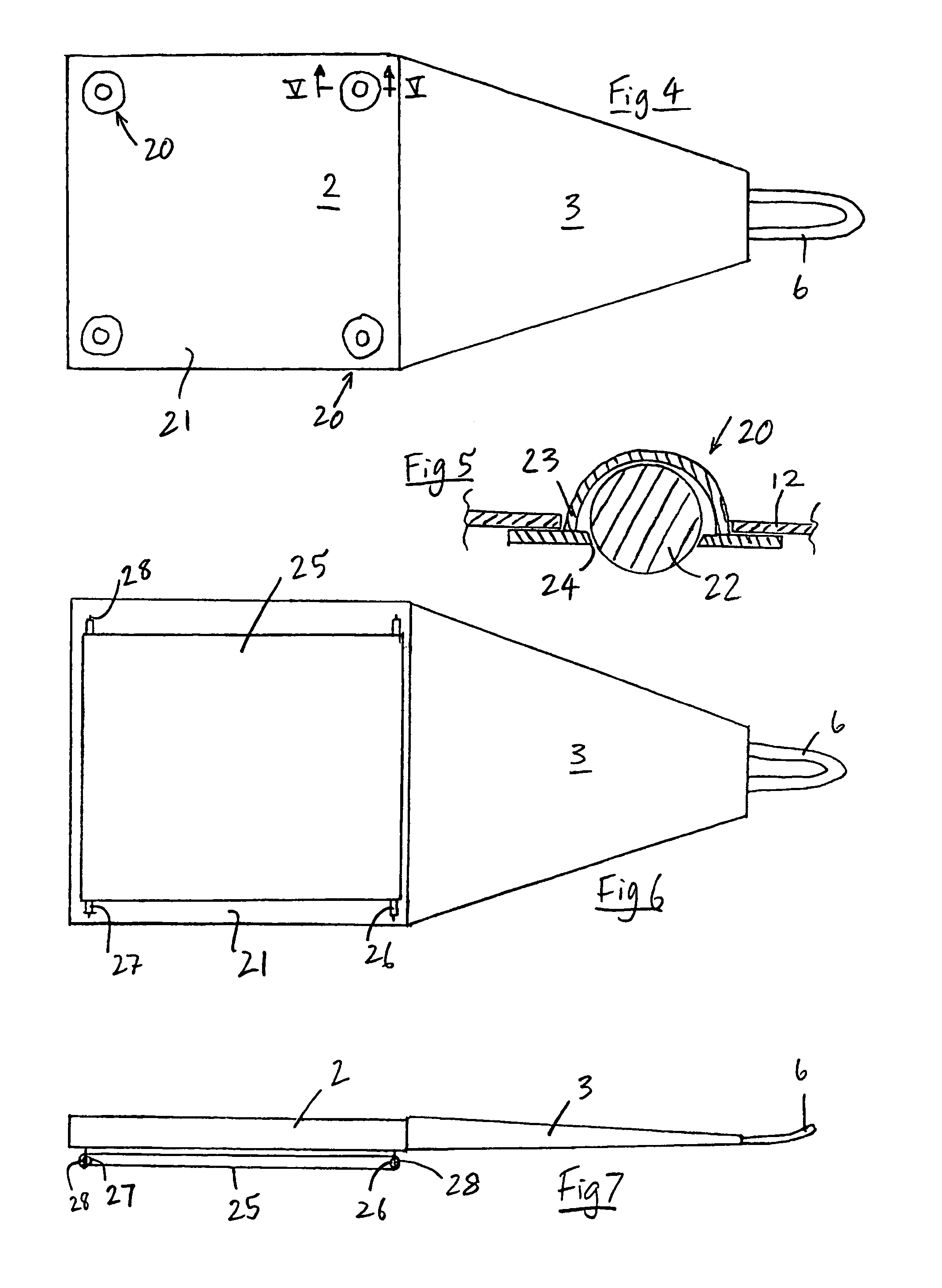Positioning device for use in radiography
a positioning device and radiography technology, applied in the field of radiography, can solve the problems of unsatisfactory use, inability to simply insert the grid and cassette, from the side and beneath the patient between an upper and a lower sheet on a conventional bed or support, and have not proved satisfactory, so as to achieve the effect of avoiding jarring or movement to the spine or pelvis, and being easy to position properly
- Summary
- Abstract
- Description
- Claims
- Application Information
AI Technical Summary
Benefits of technology
Problems solved by technology
Method used
Image
Examples
Embodiment Construction
[0021]As can best be seen from FIG. 1, a positioning device according to the present invention for use in radiography to position an X-ray cassette or a radiographic grid and X-ray cassette beneath a patient lying upon a bed or other support to enable an X-ray image of a portion of the patient to be taken essentially comprises a plastics envelope 1 defining first and second envelope sections 2,3 separated from each other by a common edge 4. As can be seen from FIG. 1, the first envelope section 2 is generally rectangular in configuration while the second envelope section 3 has the shape of a trapezium or truncated triangle the width of which narrows from edge 4 to a minimum width at its furthest edge 5, where a handle 6 formed of cotton or other fabric tape is attached. Although the edges of envelope section 3 are shown as straight lines, they could be curved. The envelope sections are sealed from each other along the common edge 4 and also sealed along their remaining edges 5, 7, 8...
PUM
 Login to View More
Login to View More Abstract
Description
Claims
Application Information
 Login to View More
Login to View More - R&D
- Intellectual Property
- Life Sciences
- Materials
- Tech Scout
- Unparalleled Data Quality
- Higher Quality Content
- 60% Fewer Hallucinations
Browse by: Latest US Patents, China's latest patents, Technical Efficacy Thesaurus, Application Domain, Technology Topic, Popular Technical Reports.
© 2025 PatSnap. All rights reserved.Legal|Privacy policy|Modern Slavery Act Transparency Statement|Sitemap|About US| Contact US: help@patsnap.com



